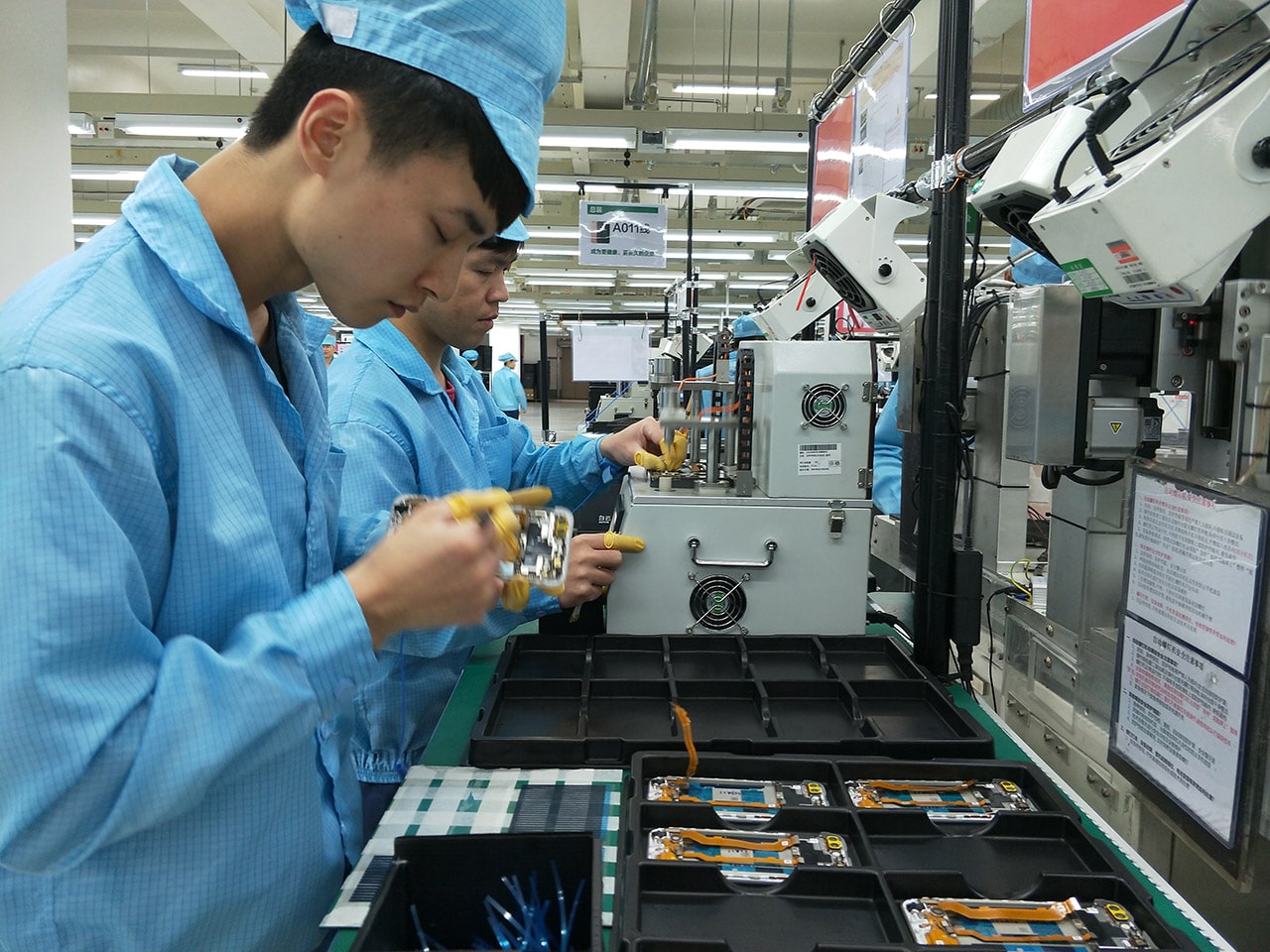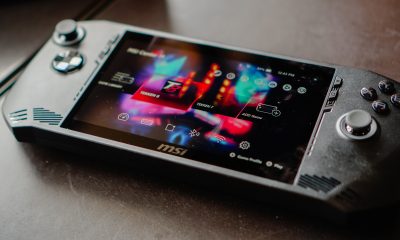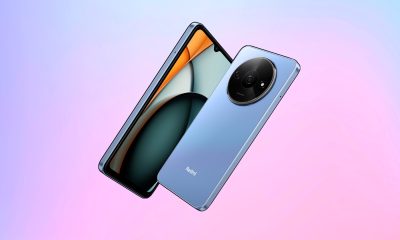Enterprise
Trade War: China’s loss is everyone’s gain
The flow of technology remains untouched

Trade tensions between the U.S. and China have reached a stage where hostility has become a new normal. Both countries have imposed high tariffs on a substantial proportion of each other’s goods and just when we thought the war is de-escalating, President Trump announced 10 percent tariffs on a further US$ 300 billion worth of Chinese goods.
It’s not surprising that China’s technology muscle is independent to a huge extent. The country is the world’s number one smartphone maker in terms of volume, almost every company on this planet relies on components that are made in China, and giants like Baidu, Tencent, and Alibaba offer everything to the end-user.
Sure, Chinese technology giants still rely on a huge chunk of western technology and we’ve already seen how Huawei took the biggest hit. But, while all of us are busy analyzing and understanding the trade war, other countries are making moves, and they’re making them fast.
Other countries swooping in
It’s a classic story of two cats fighting for a piece of cake and a monkey swoops in, fooling both of them. The two incumbents gain nothing in the end and a third-person reap all the benefits. Obviously, a literal translation would be an exaggeration, but we’re seeing a similar anomaly with the Trade War.
According to the U.S Census Bureau, Chinese imports have dropped by US$ 31 billion in the first half of 2019. But, Southeast Asian countries like Vietnam, India, and South Korea have successfully bridged the gap. Vietnamese imports to the U.S increased by a whopping US$ 7.6 billion, followed by South Korea at US$ 3.8 billion and India at US$ 2.7 billion.
These records are a combined figure of all imports and not just limited to technology products and services. But, the tides are changing massively in this industry as well.
Companies are uncertain about their long-term investments in China and are looking for alternatives. Samsung and Intel were looking for safer options for years and currently employ 182,000 workers in Vietnam. These factories assemble smartphones, processors, and almost every component one needs.
According to Bloomberg, the Vietnamese government allowed investment licenses to 1,720 projects in the first half of 2019. Nintendo has decided to shift its Switch production to Vietnam and even Sharp has announced relocation plans.
Foxconn, the maker of iPhones in China has bought a land parcel in Vietnam and announced a US$ 200 million investment in India. Apple, in partnership with Wistron India and Foxconn, is already making iPhones in the country and recently top-of-the-line models were also being shipped out.
Samsung already has the world’s largest mobile phone factory in India that assembles top-tier variants, ready for export. While the quantity is negligible when compared to China’s output, these small steps are an indication that China is slowly losing its edge.

For the longest time, Google kept Pixel and Android behind two different teams. While the Pixel team dealt with devices made by and for the brand, the Android team ships a product meant for brands outside of the company’s purview. However, the days of separation are at an end. Google is officially merging its Pixel and Android teams together.
In a shocking announcement, the company has confirmed that the teams handling hardware and software will fall under a single team headed by Rick Osterloh. Prior to the merge, Osterloh was the senior vice president of devices and service, which was Google’s hardware branch. He will now oversee both hardware and software.
Because of the new leadership change, Hiroshi Lockheimer, former head of Android, will now move on to other projects within Alphabet. Of note, the change is not harsh for Lockheimer. He and Osterloh had been contemplating on the merge for a while.
Now, why the change? As is the case with everything today, it’s all because of AI. Speaking to The Verge, Osterloh explains that the merge will help with “full-stack innovation.” With how technology is these days, it’s now impossible to develop AI without having a close eye on hardware, such as in Google’s AI developments for the Pixel camera. Merging the teams will help streamline development, especially when hardware is involved.
Despite the change, outside brands, like Qualcomm’s Cristiano Amon, remains confident of Android’s capabilities outside of Google. Just expect more AI coming out in the near future.

The ongoing trade war between the United States and China is putting a lot of companies out of business in one country. While all eyes are currently on America’s crusade against TikTok, China has launched a salvo of its own. The country has started banning AMD and Intel, starting with government devices.
Recently, as reported by the Financial Times, China has introduced a new rule that bans American chipsets and servers from government agencies. The new ban includes AMD, Intel, and Microsoft Windows.
In lieu of the now-banned brands, Chinese government agencies must use approved brands from a list of 18 Chinese manufacturers. Unsurprisingly, the list includes Huawei, another brand involved in the ongoing trade war. (Huawei is still banned on American soil.)
As with bans from America, China’s latest rules stem from a desire to implement national security. Both countries allege that using brands from the opposing side will open a potential avenue for transferring classified information.
Currently, the ban against the American chipsets are only affecting government devices. However, if it follows the same trajectory as Huawei and TikTok in the United States, a government-only ban might soon lead to an all-out ban on consumer devices. As TikTok is currently hanging in the balance, it’s unlikely that the trade wars will cool down anytime soon.

So far, Apple’s greatest enemy has been the European Union. Months and months of claiming that the company engages in anti-competitive practices, the region has successfully caused Apple to drastically change a lot of things about the iPhone including the Lightning cable. Now, a new challenger wants Apple to answer for its supposed grip on the industry: the United States government.
Today, the Department of Justice is officially suing Apple for supposedly monopolizing the smartphone industry and stifling competition. The lawsuit alleges that Apple’s lineup of products prevent users from trying out other brands. For example, Apple limits how well a third-party smartwatch works on an iPhone, pushing users to go for an Apple Watch instead.
The lawsuit also includes an important pain point in Apple’s fight in Europe. It says that the company makes it difficult for iPhone users to communicate with Android users (and vice versa). Late last year, the company already committed to supporting RCS as a messaging standard, finally easing communication between the two systems. Their adoption has yet to arrive, though.
Though not as stringent as Europe, the American government is no slouch when it comes to questioning its own companies for pursuing anti-competitive practices. In the past, it went through Google and Spotify to protect the interests of its citizens. The lawsuit against Apple is no different, gathering signatures from sixteen states.
For Apple’s part, the company aims to get the case dismissed, alleging the lawsuit’s unfair scope of just the American people when it targets the entire world.
SEE ALSO: Apple opens first Developer Center in Southeast Asia
-

 Features2 weeks ago
Features2 weeks agoWhy choose the MSI Claw?
-

 Reviews7 days ago
Reviews7 days agorealme 12 5G review: It was enchanting to meet you
-

 Buyer's Guide2 weeks ago
Buyer's Guide2 weeks ago2024 Samsung TV: Buyer’s Guide
-

 Reviews2 weeks ago
Reviews2 weeks agoJBL Soundgear Sense review: Make every run magical
-

 Smartphones2 weeks ago
Smartphones2 weeks agoHuawei Pura 70 series is live in China
-

 Reviews3 days ago
Reviews3 days agoOnePlus 12R review: Making sense of OnePlus’ latest flagship
-

 Reviews2 weeks ago
Reviews2 weeks agoChallengers review: A thrilling drama wrapped as a tennis anime
-

 News1 week ago
News1 week agoXiaomi Redmi A3 Philippine pricing, availability























